Title : Genome-wide evaluation of population structure and genetic diversity of two Ethiopian native sheep populations
Abstract:
Indigenous Ethiopian sheep inhabit diverse environmental conditions and hold opposing morphologies. Characterizing their genetic diversity is crucial for developing appropriate breeding and conservation schemes. The objective of the current study was to determine the genetic diversity and population structure of two indigenous sheep populations in Ethiopia. A total of 48 whole blood samples were collected randomly from the Selale (n=24) and Semien (n=24) sheep populations. Publicly available SNP genotype data from five Ethiopian sheep populations (Arsi-Bale, Menz, Blackhead Somali, Horro, and Adilo) and four sheep breeds from the globe (Afshari, Egyptian Barki, Red Maasai, and Indian Garole) were used to liken the genetic connections of the study populations with their conspecifics. The average genetic diversity ranged from (HE= 0.325) for Ari-Bale to (HE= 0.362) for the Selale sheep population, with a mean of (HE= 0.344) across all populations. Estimates of genetic differentiation among sheep populations in Ethiopia ranged from 0.019 between Selale and Horro sheep to 0.077 between Semien and Arsi-Bale sheep. The analysis of molecular variance showed that 94.25% and 3.56% of the genetic differentiation were attributable to variances within and among populations, respectively. Principal component and admixture analyses revealed the most likely number of ancestral populations of the contemporary indigenous sheep in Ethiopia was three; hence Semien and Selale sheep populations were in different categories based on their tail morphology and ecological distribution. The results of our study reveal a clear admixture among the study populations that could be linked to historical gene flow and common maternal origins.
Keywords: genetic diversity; indigenous sheep; population structure; SNP genotypes



